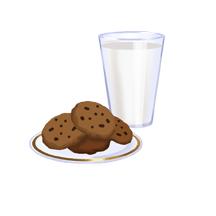This page has been archived and is being provided for reference purposes only. The page is no longer being updated, and therefore, links on the page may be invalid.
|
|
|
|
Sizing up Teen Snacking
By Rosalie Marion BlissMay 9, 2008
The effect of snacking on teenagers' dietary intakes of recommended nutrients and MyPyramid food groups has been examined, and the findings are both positive and negative. After analyzing the eating habits of more than 4,000 teenagers surveyed nationwide, Agricultural Research Service (ARS) scientists found that 90 percent reported eating one or more snacks in a day.
The study was led by nutritionist Rhonda Sebastian with the ARS Beltsville Human Nutrition Research Center at Beltsville, Md. The study has been published online and also appears in the May print issue of the Journal of Adolescent Health. ARS is the U.S. Department of Agriculture's chief scientific research agency.
The 12- to 19-year-old teenagers—who were selected to be representative of the U.S. population—reported everything they had eaten during a 24-hour time period while participating in the survey What We Eat in America/NHANES 2001-2004. Overall, snacking was found to enhance the intake of some MyPyramid food groups, but it also contributed to the intake of excess discretionary calories as added sugars and fats.
Among the highest snackers—those who consumed four or more snacks in a day—both boys and girls ate more than twice as much fruit as their non-snacking peers. Even so, almost three-quarters of those relatively high fruit eaters failed to meet their MyPyramid recommendation to consume 1½ cups to 2½ cups of fruit daily, depending on age, gender and activity level.
On the positive side, boys who snacked more often were significantly more likely than nonsnacking boys to meet the MyPyramid milk recommendation, which is to consume three cups daily for both boys and girls. High-snacking girls, however, were not more likely to meet the milk recommendation compared to nonsnackers.
Among all of the teenagers surveyed, snack foods on average accounted for 43 percent of the day's total intake of added sugars, which they consumed mostly as soft drinks, fruit drinks, candies, dairy desserts and cakes. The researchers concluded that replacing those snacks with more nutritious foods and beverages would help teenagers consume diets more in step with national recommendations.

